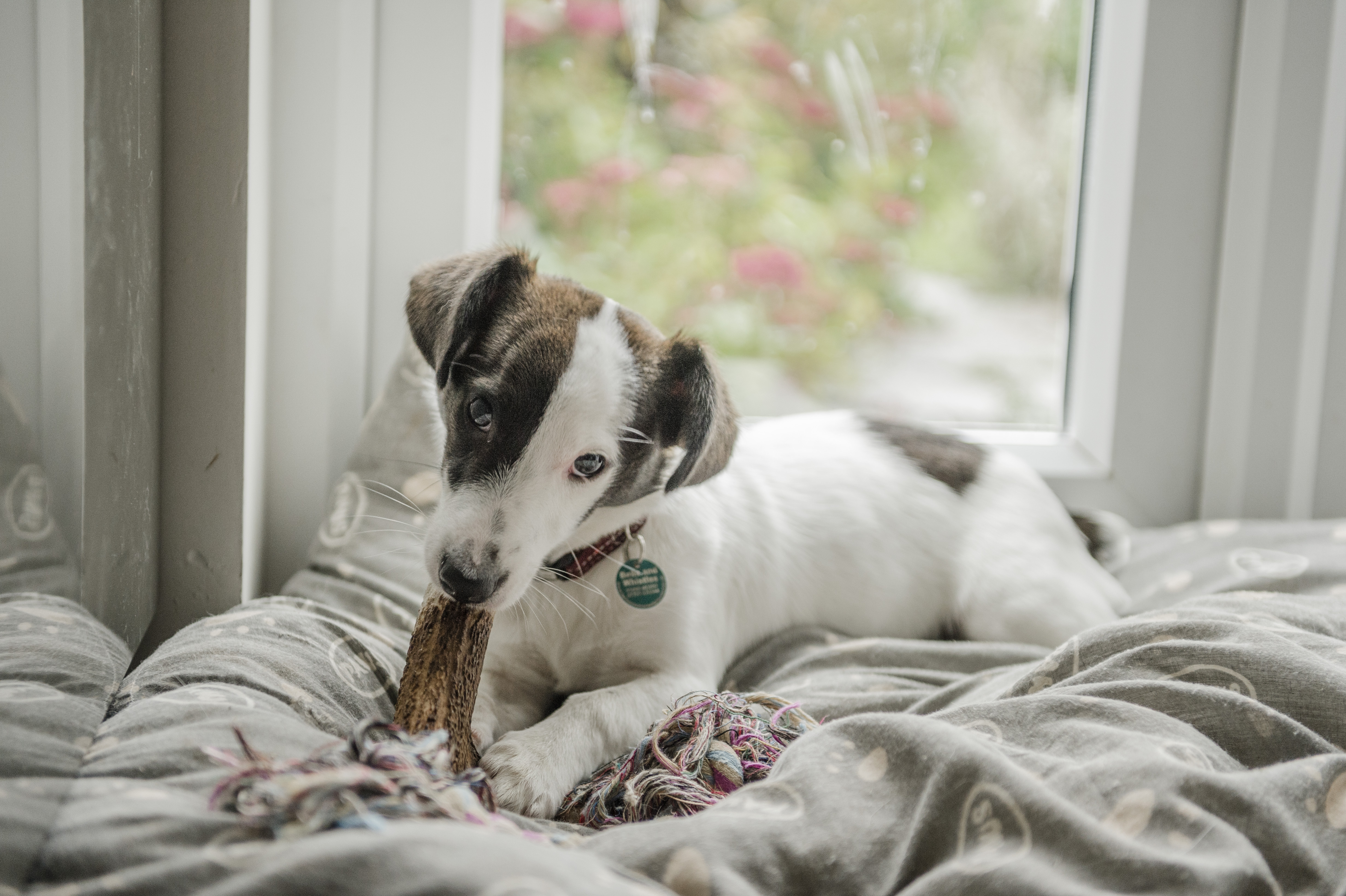
Puppies and chewing
Why do puppies chew?
All puppies enjoy and need to chew. This is partly to relieve some of the discomfort they experience during teething (between three and seven months of age) and also to help facilitate the removal of the puppy teeth and the eruption of the adult set. Puppies also have a huge desire to explore their environment and as they don’t have hands, picking things up and chewing is one of the ways they like to find out about the world in which they live in!
What sort of things should my puppy be chewing?
To help satisfy your puppy’s desire to chew and explore, it’s important to provide a variety of different items:
Chews
Unlike toys, chews are designed for nibbling and gnawing and are essential if you want your puppy to chew acceptable items instead of your furniture! Examples of chews include dental sticks, pressed hide and rawhide twists.
Kongs
Most dog toys aren’t designed for hard chewing and some will be easily damaged if you allow your puppy to chew on them for too long. Your puppy may also accidently ingest some of the toy which could be very dangerous. It’s good advice to pick up toys when you aren’t there to supervise for these reasons; however it is important to leave at least one ’safe’ toy down for them to play with at any time. An excellent choice for this purpose is a chew toy such as a Kong (available from pet shops). This is a firm rubber toy, hollow on the inside and which can withstand lots of chewing. If you stuff biscuits inside the Kong or smear some cheese spread inside, your puppy will work to get the food out, and will nibble, lick and chew on the toy for some time. Kongs are also good at stimulating play and chase behaviour, since they bounce unpredictably in different directions when thrown.
Activity balls
These are hollow dimpled balls, the size of a small football, with two holes. If you place small pieces of dry food inside (such as a portion of your puppy’s daily food ration), your puppy has to roll the ball around to get the food to drop out of the holes. This keeps them occupied for quite some time.
How long will I need to provide chews for my puppy?
Once a young dog reaches adolescence (between seven and 12 months of age), they often have an uncontrollable desire to chew even more than they did when they were a puppy. This could be because it’s the time that the adult teeth settle into the jawbone which could be uncomfortable for some dogs. Young dogs are also easily bored at this time, so it’s important that you meet their needs by providing the right amount of exercise and mental stimulation.
Although the desire to chew will lessen gradually as your dog gets older it’s important to remember that most dogs need to chew throughout their lives - for pleasure, to exercise the jaw and to keep teeth clean. How much they’ll need to chew will depend on the individual and often their breed type. Labradors and Staffordshire bull terriers certainly seem to have a stronger need and desire to chew.
Chewing is also a calming activity and most dogs seem to find it immensely satisfying, so it’s important that you provide appropriate items to fulfill this need.
Tips to help your puppy target the right item to chew
- Rotate chews on a regular basis. Adding some novelty will ensure your puppy doesn’t get bored and begin to target more ‘interesting’ items (like your furniture!)
- Any valuable possessions (such as wallets) or potentially dangerous items (such as scissors) should be removed from your puppy’s reach when you are not there to supervise. Your puppy may chew your best shoes or the remote control if these are within reach and you are not there to show them what they are allowed to chew.
- Don’t punish your puppy for chewing the wrong thing as this may cause your puppy to become frightened of you or anxious. If you notice your puppy is about to / in the middle of chewing something you don’t want them to, quietly direct attention onto an acceptable chew, and make a huge fuss when the dog begins to chew on it. This will encourage your puppy to select the items you want to be chewed.
If you provide a range of chews, plenty of play sessions and the opportunity to explore different environments and exercise well, you are well on the way to having a contented puppy that only chews the right things.
If you need help at all with chewing advice for your puppy, then please contact the centre you rehomed your pet from and we will do our best to help you.






